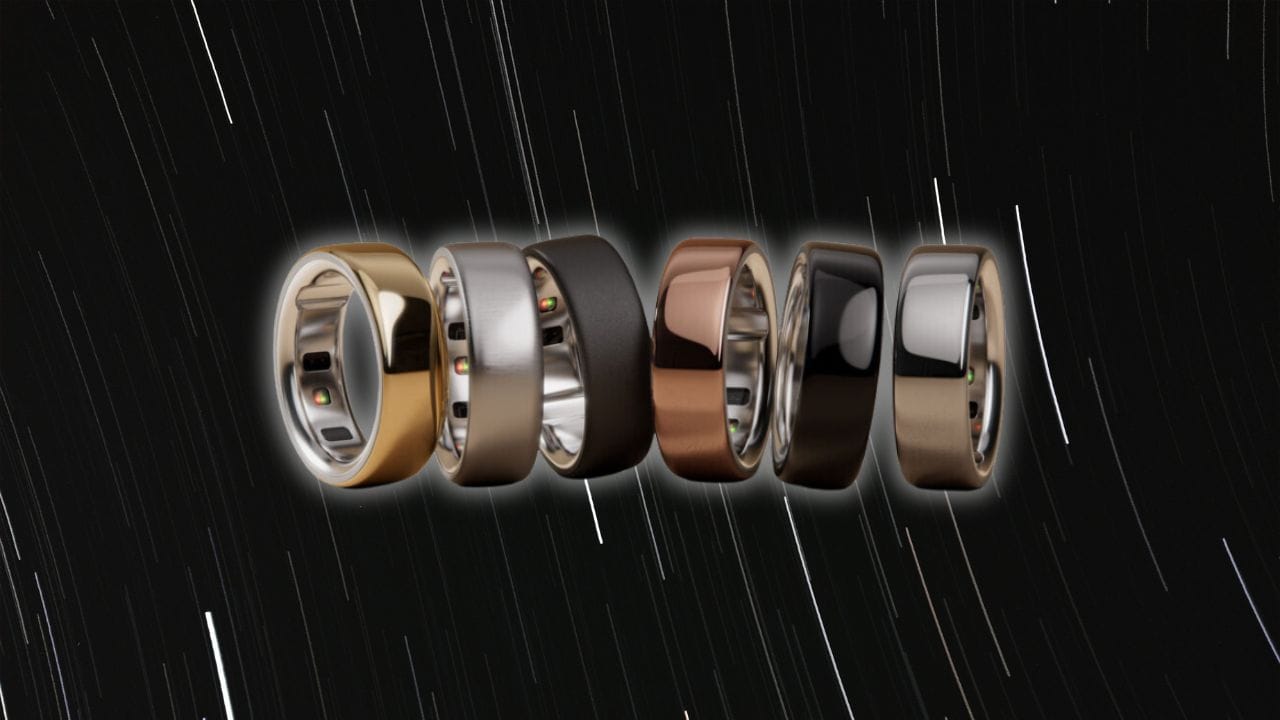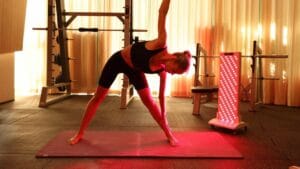We include links to products we think are useful for our readers. If you click and buy a product through one of the affiliate links on this page, we may earn a small commission. Please read our disclosure.
The Oura Ring Gen 4 has been out since around October 2024, and I’ve been wearing it daily for a couple of months now. As a longtime Oura user (I’ve worn the Gen 3 for years), I was very excited to see what Gen 4 would bring to the table. I hoped it would build on everything I already loved about Oura – the sleek look, the insightful sleep tracking, the comfort – while fixing a few of the minor gripes I had with the previous version. Now that I’ve lived with the Gen 4 on my finger, I have some thoughts. Some are really good, and a few are, well, not so great.
At its core, the Oura Ring 4 is still a tiny wellness powerhouse. It’s a smart ring packed with sensors that can count steps, read your heart rate, track your sleep, predict menstrual cycles, gauge stress, and give you personalized “readiness” insights each day. In other words, it’s aiming to be your 24/7 health companion without the need to wear a chunky watch. The Gen 4 model comes in an all-titanium build, available in six finishes (like Silver, Gold, Rose Gold, Black, Stealth, and Brushed Titanium) and a wider range of sizes (US ring sizes 4 to 15) to fit more people. It starts at $349 USD (about $549 AUD for us in Australia) for the base finish, with some premium colors costing more, and Oura still charges a subscription fee to unlock its most advanced insights.
If you’re wondering “Is it worth upgrading from Gen 3? Or buying Oura Ring for the first time?”, hopefully my experience can help answer that. I’ve put the Oura Ring 4 through my daily routine – from busy workdays and intense workouts to restful nights and recovery days – and here’s my honest take after several weeks of living with it.
Quick Look at Oura Ring 4
Editor’s Rating:
Pros
- Sleek and stylish design.
- Accurate and detailed sleep tracking.
- Tracks a wide range of health metrics.
- Lightweight and comfortable for daily wear.
- Durable and water-resistant.
- Integrates well with health apps like Apple Health.
Cons
- Sizing can be tricky, even with the kit.
- Requires a $9 AUD monthly subscription for full features.
- Battery life may not reach the advertised 7-8 days with heavy use.
- Limited color and design options.
- Expensive upfront cost.
My Thoughts on the New Oura Ring 4
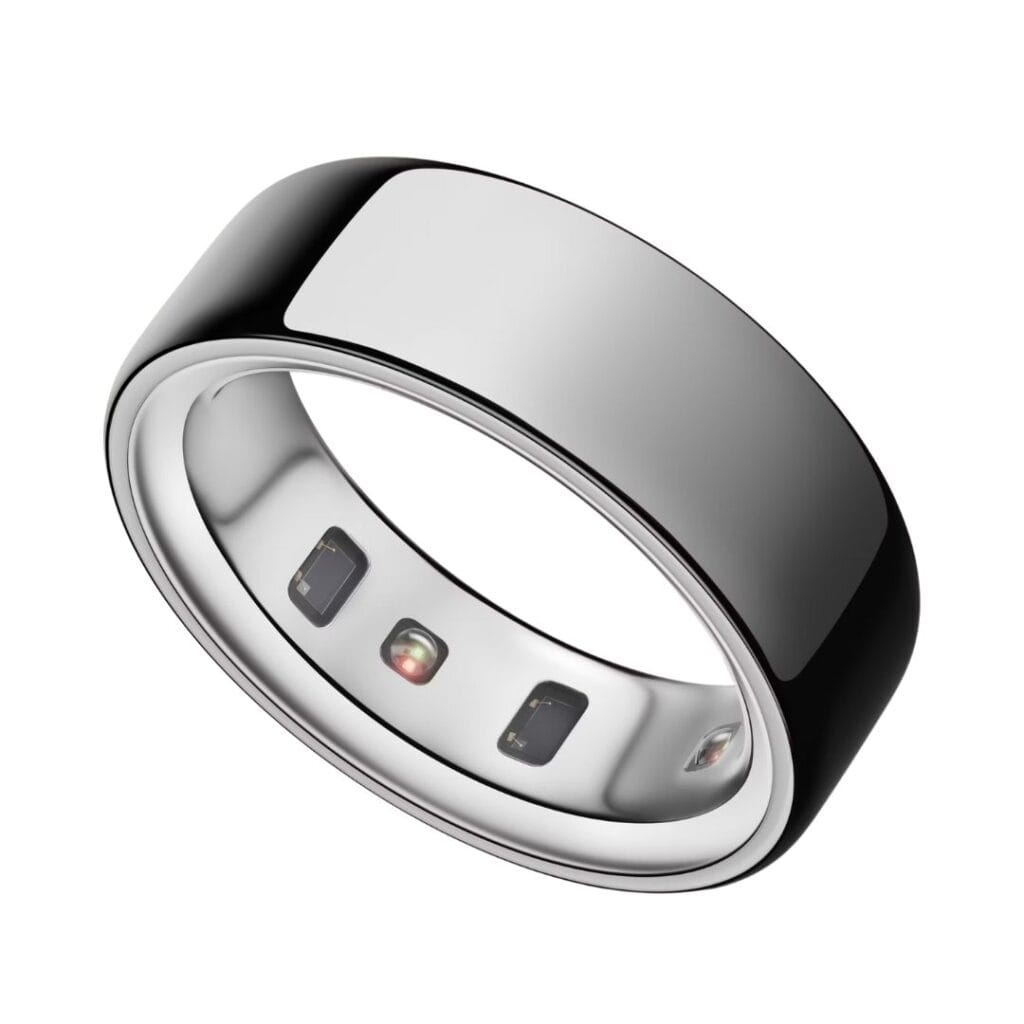
A detailed health tracker offering over 30 biometric features, available in six finishes like Rose Gold and Stealth, with sizes from US 4 to 15.
Priced at 349 USD plus a 5.99 USD/mo subscription.
Oura Ring 4 looks great, feels… okay?
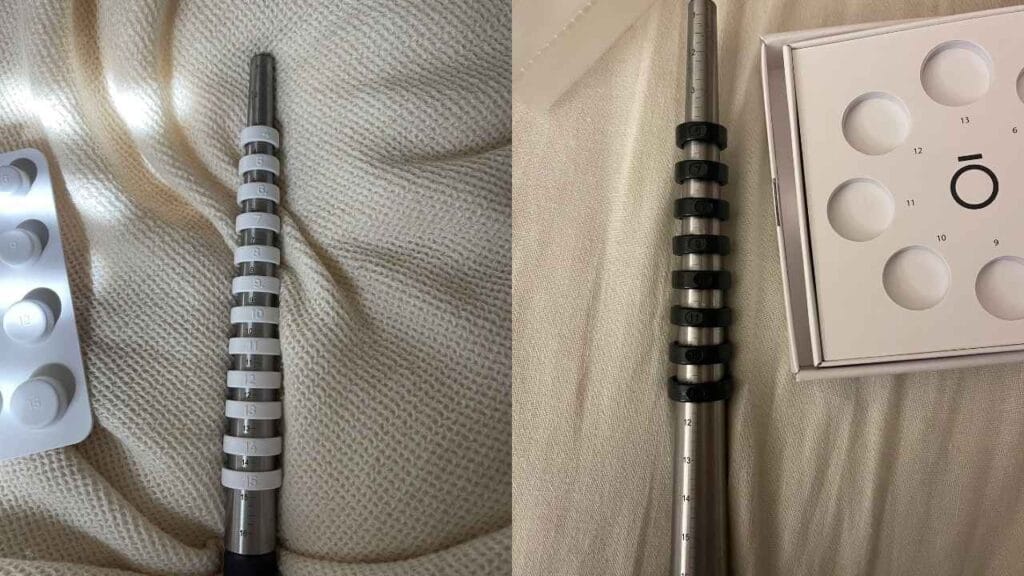
One thing I’ve always loved about Oura Rings is how good they look and how discreet they are. The Gen 4 keeps that same minimalist, polished design I appreciated in Oura Ring Gen 3. On the outside, it doesn’t scream “tech gadget” at all – it could easily be mistaken for a simple metal band or piece of jewelry. I got mine in the Silver finish, which is subtle and goes with everything, whether I’m in gym clothes or dressed up for a night out. All the fourth-gen rings are fully round (Oura did away with the older flat-top design option), and the entire exterior is titanium. It definitely feels premium and durable to the touch. After a couple months, my ring still looks almost new; I’ve only managed to put one tiny scuff on it despite wearing it during weightlifting and daily chores. Oura claims improved scratch resistance, and so far I’m inclined to believe it – though I still take a little care not to bang it against heavy metal dumbbells or rough surfaces when I can help it.
But let’s talk about comfort, because that’s where things got a bit tricky for me with Gen 4. With the Gen 3, the sizing process was pretty straightforward using Oura’s plastic sizing kit. This time, I found the sizing kit a bit frustrating. Even after carefully picking what felt like the right size, my Gen 4 ring felt slightly too snug when I first started wearing it. Oura’s documentation notes that Gen 4 rings run about a half-size large compared to standard US rings (for example, an Oura size 10 is roughly a US 9.5). In practice, I had to learn that the Gen 4 fits differently than Gen 3 did. The older Gen 3 had a resin inner layer and little sensor bumps that pressed against your finger – those bumps actually gave a bit of wiggle room once your finger adjusted. The new Gen 4 has a smooth inner surface with recessed sensors and no resin layer, which means the fit is more uniform around your finger. In my case, that meant a size that worked in Gen 3 felt a tad tight in Gen 4 initially. After a week or two of continuous wear, either my finger acclimated or the ring “broke in” slightly (there’s no moving parts, but perhaps I just got used to it), and now it sits comfortably. The adjustment period wasn’t unbearable, but it wasn’t seamless either – I was definitely aware of the ring those first few days.
Once I got the size right, the Gen 4 actually is very lightweight and generally non-intrusive 24/7. Most of the time I forget I have it on – which is exactly what you want from something you wear even to sleep. Oura removing the inner bumps was a smart move for comfort. I can clench a fist, carry groceries, or do yoga without the ring digging in. Even typing on a keyboard is fine (I was worried a ring would bother me while typing, but it hasn’t been an issue). That said, there are still moments when I notice it more than expected. During heavy weight training, for example, gripping a barbell or kettlebell can press the ring into your skin a bit. (I’ll admit I sometimes take it off briefly when doing really heavy deadlifts or pull-ups, just to be safe.) Also, if I’ve been sedentary and my fingers get a little puffy (like after a long flight or eating a salty meal), the ring can feel tighter until my swelling goes down. These aren’t dealbreakers – just realities of wearing a ring tracker. In fairness, Gen 4 is more comfortable than Gen 3 overall. The new “smart sensing” tech that Oura built into it means the ring can still get accurate readings without needing those raised bumps pressing in. And not having a chunky sensor node means no weird pressure points when I’m asleep or when my hands are in a tight grip.
Speaking of accuracy and that Smart Sensing upgrade: Oura says the Gen 4 uses an array of 18 data-collection pathways (versus only 8 in Gen 3) to capture your vitals. The sensors inside are placed asymmetrically around the ring, and the system intelligently decides which sensor angles are getting the best signal from your finger at any moment. In theory, this means it matters less if the ring spins around or isn’t perfectly aligned – it should still track well. That’s some cool engineering, and it’s impressive they managed to cram even more tech into such a tiny device.
From a practical standpoint, I can’t say I personally noticed a huge jump in accuracy (Gen 3 was already pretty good for me), but I also haven’t had any gaps or weird readings with Gen 4. I have knobbier knuckles, so with Gen 3 those sensor bumps would sometimes hurt when pulling the ring off, especially if my hands were swollen. Gen 4 has completely solved that pain point for me – slipping it on and off is much easier and gentler on my finger. So, comfort and design-wise, Oura 4 gets a thumbs up after that initial sizing hurdle. It looks sleek, feels light, and seems built to handle everyday life.
Tip: If you’re upgrading from an older Oura, definitely use the new sizing kit and don’t assume your old Oura size will be the same – mine ended up changing by about one full size because of the design differences.
Performance is still top-tier
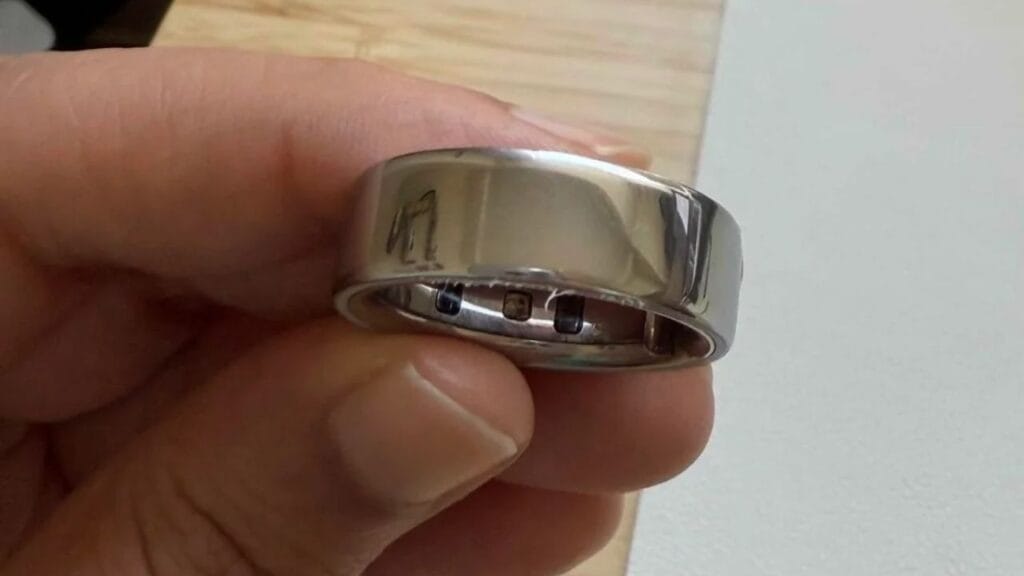
Of course, a pretty ring means nothing if it doesn’t perform. One of the biggest reasons I stuck with the Oura Ring through the Gen 3 era was its tracking accuracy, especially for sleep. I’m kind of a data nerd when it comes to my rest and recovery. The Oura Ring 3 often could tell when I had a rough night of sleep even before I fully realized it, and it nudged me to prioritize recovery on days I needed it. With Gen 4, I was eager to see if the tracking got even better, and to explore some new metrics that Oura has been rolling out (like blood oxygen monitoring).
I’ll start with sleep tracking, the crown jewel feature in my opinion. When it’s on point, it’s incredibly insightful. The Oura Ring 4 breaks down my sleep into stages (Deep, REM, Light, etc.), shows me how long I spent awake in the night, and even detects things like my heart rate dip and overnight heart rate variability (HRV) – which are great indicators of recovery. Most mornings, the ring’s analysis of my night lines up well with how I feel. For example, I’ll see a low sleep score on a night I know I tossed and turned, or it’ll show a high proportion of REM sleep on a night I had vivid dreams. It’s like having a little sleep coach on my finger. Over the past few weeks, I’ve actually adjusted my bedtime slightly earlier because the Oura app kept warning me that my Sleep Score suffered when I stayed up past midnight. Lo and behold, going to bed at 11:00 PM instead of 12:30 AM for a while has improved my scores and, more importantly, I feel more rested. Seeing that cause and effect in the data really motivates me to make better choices (most of the time, anyway – I still have the occasional late movie night).
That said, the sleep tracking isn’t 100% perfect. There have been a few nights where I know I woke up for a bit (one night my cat knocked something over, jolting me awake), but the ring’s report the next morning showed a solid block of sleep with maybe only a brief disturbance. It sometimes misses very short wake-ups or restlessness. Gen 3 did this too on occasion – it’s a common challenge with sleep trackers, since we sometimes don’t move enough during a quick awakening for the device to notice. It doesn’t happen often, and usually the overall trends are still accurate. Another example: one weekend I felt I slept in really late and woke up groggy, but Oura gave me a surprisingly decent sleep score. I suspect it was fooled by the fact I stayed in bed longer (hence more total sleep), even though the quality felt mediocre. These little discrepancies make me remember that even the best tracker isn’t a mind reader – it gets most things right, but not every subjective nuance of how you feel.
Moving on to activity tracking, the Gen 4 ring tracks my daily movement (steps, calories burned, active time) and workouts. It’s not going to replace a dedicated running watch or a chest strap for detailed exercise stats – and to be fair, it doesn’t try to. Oura’s approach is more about the big picture of your activity and how it impacts your readiness and recovery. I log my workouts in the Oura app (or it auto-detects some activities), and it adds that to my daily “Activity Score.” I really like that it credits me for all kinds of movement, not just formal exercise. A long afternoon walk, an hour of house cleaning, a game of pickup basketball – it all counts toward your goal. Gen 4 introduced improved automatic workout detection with continuous heart rate during activities, which means the ring is a bit smarter at figuring out “oh, you’re working out now.” In my experience, it successfully picked up a few of my gym sessions and a bike ride without me telling it, which was a nice surprise. For things like runs or cycling, I still prefer to manually start a workout on my smartwatch for GPS data, but I let Oura sync the heart rate and overall effort info.
In terms of accuracy, step counting is one area that’s just okay. On days I also wore a basic pedometer or my smartwatch, the Oura Ring’s step count was sometimes a bit higher – maybe a few hundred to a thousand steps difference over the course of a day. One day it gave me credit for walking about 800 steps more than my phone did, possibly because I gesture with my hands a lot and the ring interpreted some of that movement as steps (oops!). It’s not wildly off, and frankly step counts can vary between any two devices. For me, it’s close enough that I get the general idea of how active I was. If I see 12,000+ steps in Oura, I know it was a very active day; if it’s under 5,000, I definitely spent too much time at the desk. So, small accuracy quirks aside, the activity tracking serves its purpose.
Now, one of the hyped new features with Gen 4 (and recent app updates) is stress tracking. Oura has begun providing a “Daytime Stress” graph and a Stress Reflections feature to log how you feel. I was really interested in this because stress is something we all deal with, and being more aware of it can help with mental health and recovery. After using it for several weeks, my feelings are mixed. Some days, the ring absolutely nails it – for instance, on a day full of back-to-back meetings and deadlines, the app showed my stress levels spiking in the afternoon, which matched how I felt. Seeing that prompted me to actually do a short breathing exercise (Oura has some guided sessions in-app) to calm down, which I might have otherwise powered through. On other days, though, Oura will label my day “calm” when I subjectively felt pretty anxious or tense. Stress is a tricky thing to measure via physiology – the ring is looking at indicators like heart rate variability (HRV) and resting heart rate throughout the day to infer stress. Those metrics can be influenced by many factors (caffeine, temperature, illness, etc.), so it’s not an exact science. I consider Oura’s stress feature as a helpful nudge or an extra data point. If it consistently shows high stress and I feel off, that’s a sign I need to make some changes (more sleep? fewer late coffees?). But I don’t panic over any single day’s reading. Bottom line: the stress tracking is a cool addition, but it’s still evolving. I suspect it will get smarter with future updates, and Oura is actually quite good about rolling out improvements via software.
Another area worth mentioning is female health tracking. While I personally don’t use this feature, the Oura Ring has the ability to predict menstrual cycles and even offer insights for those going through peri-menopause. It does this by tracking your body temperature trends and other metrics. From what I’ve seen in the app, it can send alerts for predicted period start dates and fertile windows. I have a friend who uses Oura specifically for cycle tracking, and she swears by it – apparently it has been very accurate in spotting subtle changes in temperature that signal different cycle phases. So, if you’re someone who would benefit from that insight, it’s a strong plus for Oura. It’s one of those features that sets it apart from generic fitness trackers. Oura’s also collaborating with research institutions, so the data you contribute (anonymously) helps improve things like illness detection and women’s health insights down the line, which is pretty neat.
Durability and day-to-day usage: The Gen 4 ring is just as water-resistant as before (good for up to 100m according to specs), so yes, you can shower and swim with it. I wear it in the shower daily and during swims, and I haven’t had any issues at all – no ingress, no damage. I also haven’t experienced any skin irritation or anything from the sensors. The titanium material seems to agree with my skin (and I’m someone who gets rashes from cheap metal jewelry, but Oura’s materials are high-quality). I’ve also accidentally whacked the ring on a countertop and a door frame (I’m clumsy sometimes), and it survived without a scratch. So it passes the “oops” test for me. Some users online noted their Oura rings picked up scuffs, especially in the glossy finishes, so your mileage may vary depending on how rough you are. I treat it like a nice watch – durable but not indestructible.
Overall, in terms of performance and features, Oura Ring 4 delivers on being a top-tier health tracker. It builds upon what already worked well (sleep, recovery, 24/7 heart metrics) and adds more polish and data points. The few inaccuracies here and there haven’t diminished its usefulness for me. I feel more in tune with my body wearing it, which is exactly why I got into Oura in the first place. It’s like having a gentle coach or diary that keeps me accountable for my wellbeing.
What's that red light on Oura Ring 4?
If you’re new to Oura, you might be a little startled the first time you notice a faint red glow coming from your ring in a dark room. I remember the first night I wore my Gen 3 to bed, I saw a tiny red light on my finger and wondered if something was wrong – or if I was secretly E.T. Fear not! The red light is completely normal, and it’s actually a sign that the ring is doing its job.
The Oura Ring uses infrared (IR) sensors (as well as some green LED sensors) to monitor your body’s signals. That red glow comes from an infrared LED inside the ring that primarily measures things like your heart rate, respiratory rate, and blood oxygen saturation (SpO₂) during the night. IR light is ideal for penetrating human tissue, which makes it great for getting accurate readings of blood flow and oxygen levels without needing a lot of power. The trade-off is that in a dark room you can see a bit of that light leaking out.
You’ll typically notice the red light when you’re very still – most often when you’re asleep or lying down calmly. For example, if I wake up briefly at 3 AM and move my hand, I might catch a glimpse of red from the ring as it’s measuring my overnight vitals. The ring tends to ramp up the infrared sensor usage during deep sleep periods because that’s when it collects data for your Readiness Score and other insights. It might also glow when it’s taking a periodic reading of your blood oxygen (Oura does this at intervals to help detect things like breathing disturbances).
So, don’t worry, the ring isn’t malfunctioning if you see the red light – it’s actually quietly keeping tabs on your health. If for some reason the light bothers you (I personally am not bothered by it – it’s very dim and I rarely notice it unless I look for it), you can adjust some settings in the app. For instance, you can turn off continuous SpO₂ monitoring or schedule “Airplane mode” for the ring at certain times, which might reduce how often the LEDs fire. But doing so will also limit some data, so I just leave mine as is.
One more reassuring note: the amount of infrared light the ring emits is very low and safe. It’s similar to what you’d experience in a short session under an infrared sauna or the sun’s natural IR rays, but on a much smaller scale. (As someone who loves using an infrared sauna for recovery, I actually find it cool that my ring uses a mini IR to check on my body – science is awesome!) In summary, the red light = good. It means Oura is gathering those deep insights on your sleep quality and recovery while you snooze.
Battery life was a mixed bag
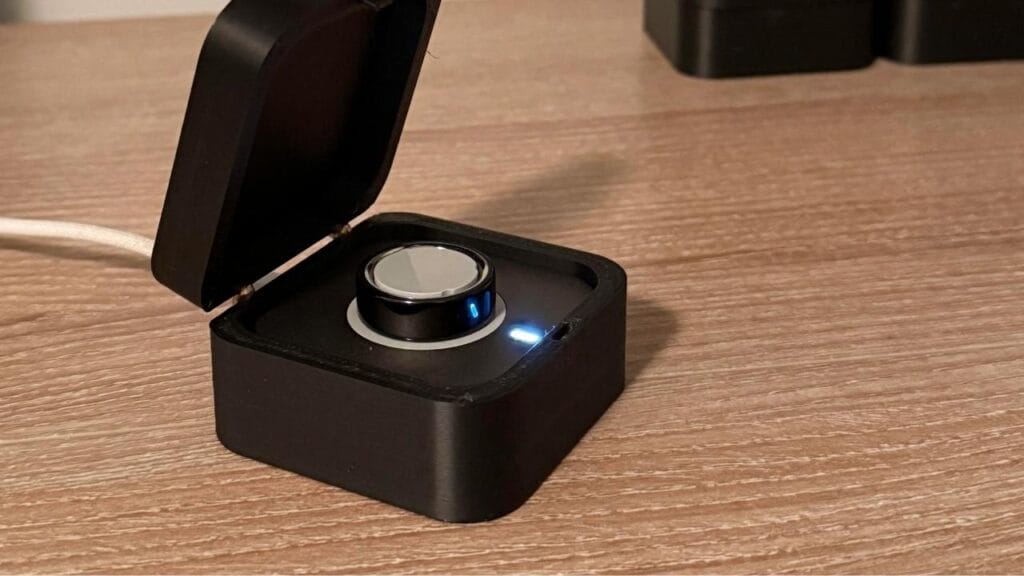
Battery life was one of the areas I hoped Gen 4 would significantly improve upon, and on paper, it did… kind of. Oura advertises up to 7–8 days of battery on the Ring 4, a slight bump up from the 6–7 days spec of the Ring 3. In practice, my results have been a bit all over the place, depending on how I use the ring.
When I first got the ring, I was eager to test its limits. On the very first full charge out of the box, I managed to go about six days before the ring nudged me (via a phone notification) that the battery was low. That’s definitely better than I used to get on Gen 3 – with the old ring I was usually charging around day 4 or 5. However, once I enabled all the shiny new features (like continuous heart rate during workouts, nightly blood oxygen tracking, and daytime heart rate tracking for stress), the battery life shortened a bit. Lately, I’m averaging about five days per charge with heavy use of all features. If I turn off a couple of things or take it a bit easier (say, I have a week where I’m not exercising as much, so the ring isn’t tracking long workout sessions), I can stretch it to around 6 days. I suspect if I disabled the blood oxygen sensing and maybe put it in airplane mode for a chunk of each day, I could hit a week or more, but I like getting the full data.
It’s worth noting that ring size affects battery life. Smaller rings have smaller batteries (less physical space), so they tend to last a bit less than larger rings. I wear a size 9 for Gen 4; a friend of mine with a size 6 gets about a day less battery on average than I do. Conversely, someone with a size 12 or above might squeeze closer to that 7–8 day mark if their usage patterns are similar. This is a factor unique to smart rings – in the smartwatch world, one model has the same battery size for everyone, but here your finger size plays a role in your endurance. In any case, even 5 days is plenty convenient for me. I only really worry about battery when it might die during something important like an overnight sleep. Thankfully, the Oura app is proactive in warning you. It’ll pop up a notification when the ring battery gets below 20% or so, usually suggesting you charge it sometime during the day before nighttime so you don’t miss sleep data.
Charging the ring is straightforward. The Gen 4 comes with a new charging base – it’s a small silver square dock (Gen 3’s charger was a round black puck). You just place the ring on top of it, and it charges via contact pins. I actually prefer this new charger design because the square shape and silver color make it a bit easier to spot on my desk (I used to misplace the black puck in my clutter). It’s still quite compact – roughly the size of an Oreo cookie, just square – and connects to a USB-C cable. It takes about 80 minutes to go from nearly empty to full charge in my experience. I usually pop the ring on the charger right when I jump in the shower or when I’m sitting down for dinner, times when I don’t need to be wearing it. A little here and there, and it’s topped up without me having to think about it. If I let it run really low, I’ll do a dedicated charge session while I’m working at the computer; even then, an hour plugged in gives me several days of juice.
One minor inconvenience is that you do need to remember to charge it during the day – because if you forget, you might end up in the predicament of “uh oh, it’s bedtime and my ring is at 5%.” I had one night where I did forget, and I missed out on that night’s data because I had to leave the ring on the charger overnight. Not the end of the world, but it irritated me since I’m kind of addicted to seeing my sleep score each morning now. After that, I set a habit to charge it a bit every 2–3 days so it never gets that low.
For a frame of reference, the Oura Ring’s battery life wipes the floor with most smartwatches and fitness bands. Even the best ones usually last 1–3 days at most if you’re tracking stuff 24/7. I love that I don’t have to charge the Oura daily – it’s a big reason I prefer a ring for this kind of health tracking. And unlike some early smart rings, the Gen 4 Oura doesn’t have any weird battery idiosyncrasies for me (no rapid drain issues or overheating). I did see some reports online of units that had battery problems, but those seem to be outliers and Oura’s support has been replacing any defective ones under warranty. My unit’s been solid.
If I could wave a magic wand, I’d love to have a portable charging case for the ring – something like what the competitors are doing (the Samsung Galaxy Ring, for instance, is supposed to come with a little case that can recharge the ring on the go). Currently, if you travel with Oura, you need to bring the dock and a cable. It’s small, but a case with an internal battery would let me juice up the ring in my bag without finding an outlet. Maybe in Gen 5! For now, the charging dock is fine and I’ve made it part of my routine. So yes, battery life is improved from the last gen, but real-world usage will likely net you around 5–7 days between charges. That’s been enough for me to track my recovery through the week without constantly worrying about a charger.
How much is the Oura Ring Gen 4?
Let’s address the elephant in the room: price. The Oura Ring Gen 4 is not cheap. The base price starts at $349 USD (or £349 in the UK, and roughly $549 AUD here in Australia). That gets you the ring in a standard color like Silver or Black with the basic finish. If you fancy one of the flashier options – say the shiny Gold or Rose Gold – the price can go up to about $499. Essentially, you’re paying a premium for the miniaturization and the sophisticated sensors packed into this tiny form factor.
On top of the upfront cost for the hardware, Oura continues to require a monthly subscription if you want to unlock all the features of the ring and app. The membership costs $5.99 USD per month (I pay about $9 AUD per month here). They do give you a free month trial when you buy a new ring, but after that you’ll be on the hook for the subscription to see your detailed insights, historical trends, most of the guided sessions, and any new features they roll out. Without the membership, the ring will still give you very basic data (like your current day’s steps and maybe your heart rate), but you lose out on the Sleep Score, Readiness Score, personalized insights, and basically the point of what makes Oura special. In my view, if you’re buying an Oura Ring, you should assume you’ll be subscribing – otherwise you’re paying a lot for a dumbed-down tracker.
I’ll admit, when I first heard Oura was moving to a subscription model (this change actually happened during Gen 3’s time), I rolled my eyes. It felt like, “Really? I already paid hundreds for the device, now I have to pay each month to use it fully?” Many people share this sentiment, and it’s a valid gripe. If you keep the ring for, say, four years, the subscription ends up adding around $288 (4 years × $72/year) to your total cost. That’s almost the price of another ring. It’s something to consider in your budget. In fact, some potential buyers are comparing that long-term cost and noting that competitor devices like certain Garmin watches or other rings might be more cost-effective since they don’t charge monthly.
However, let me offer another perspective now that I’ve been paying for Oura’s service: I actually find value in it. Oura is continuously updating their app and adding features. In the last year alone, they’ve added over two dozen new features or improvements – things like the Stress dashboard, improved period prediction, Oura Moments for meditation, an Oura “Coach” (Advisor) beta that uses AI to give you personalized tips, better workout detection, etc. These are things I’ve directly benefitted from without having to buy a new ring. It feels a bit like getting new software for free (well, not free – I’m paying the sub, but you get the idea). In a way, it reminds me of something like a Fitbit Premium or Whoop service – you pay to get deeper analytics and coaching. $5.99 a month is the cost of maybe one fancy latte. For me, investing in my health knowledge is worth that price. Especially because the insights Oura provides have genuinely helped me make positive changes (as I mentioned, better sleep habits, managing stress, etc.). If a small monthly fee is the motivation I need to stick to those habits (because I want to “get my money’s worth” out of the data), then it’s not a bad deal.
Of course, I’d prefer if it were included free for life after paying so much for the ring. But Oura seems to be positioning itself more as a service than just a product. The silver lining is that all Oura users get the big app updates, even on older rings, so you’re not forced to upgrade hardware every year – your Gen 3 from 2021 can run the same new app features (minus any that need new sensors) as a Gen 4 in 2026, as long as you subscribe. In a way, that extends the useful life of the product and might reduce electronic waste from annual upgrade cycles.
For Australian readers: buying the Oura Ring 4 here is easiest through Oura’s official website (they ship to Australia and have local pricing), or you can find it on Amazon as well. Just be aware of currency conversions and any import fees. The ring is the same globally (just make sure you get the right size via the free sizing kit Oura provides when you order).
So yes, Oura is an expensive proposition up front, and it has an ongoing cost. It’s definitely in the “premium” category for fitness/health gadgets. If you’re on a tight budget, there are cheaper ways to track basics like steps and heart rate. But nothing I’ve found quite matches Oura’s overall package of form factor + comprehensive health insights. I look at it this way: if you’re serious about optimizing your health, recovering better, and you’ll actually use the information Oura provides, then that subscription becomes an investment in yourself rather than just another bill. On the other hand, if you’re just casually curious and not likely to act on the data, the Oura Ring might be overkill for you.
(On a personal note, I’ve also justified the cost by the fact that I use my Oura Ring alongside other recovery tools. For instance, I regularly do sessions in an infrared sauna to help with muscle recovery and stress relief, and I love seeing how those sessions impact my heart rate and HRV as recorded by the ring. I’ve written about the benefits of sauna after a workout, and Oura’s data often shows improved heart rate variability and slightly lower resting heart rate on nights after a good sauna sweat.
Similarly, I’m a fan of ice baths and cold plunges – you wouldn’t believe how a 3-minute dip in icy water can spike and then stabilize your heart rate. Using the Oura Ring, I can literally watch my body’s response to cold therapy and confirm the benefits of cold plunges on my recovery score the next day. For me, being able to quantify these experiences adds a lot of value. Not everyone will use the ring in this “biohacking” way, but if you’re into recovery modalities like saunas or cryotherapy, Oura becomes an awesome companion piece that ties everything together.)
The Oura Ring Gen 4 is still the king of smart rings

Honestly, I’d give this a 4.7/5.0 rating.
Priced at 349 USD plus a 5.99 USD/mo subscription.
After wearing the Oura Ring Gen 4 for a couple of months, I have mixed feelings. It’s undeniably one of the best smart rings out there, and it delivers a lot of useful insights—especially when it comes to sleep and overall readiness. The detailed metrics and seamless app integration make it a great tool for anyone who wants a closer look at their health trends.
That said, it’s not without its frustrations. The subscription fee adds to the cost, and while the insights are valuable, it feels like something that should be included in the initial purchase price—especially considering the $549 AUD price tag for the ring itself.
But it’s still a good buy, nonetheless. If you’re from Australia, you can directly buy the Oura Ring Gen 4 on their official website or on Amazon.

